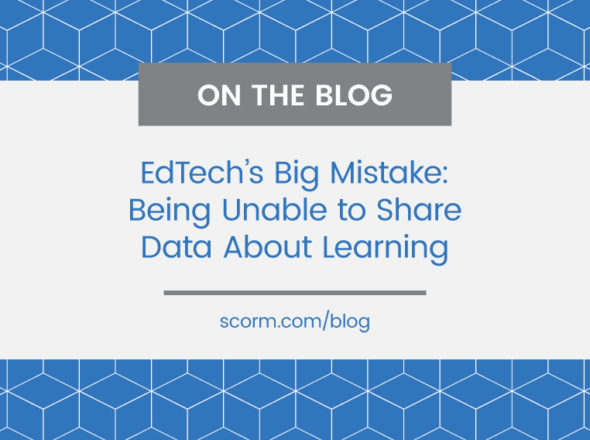Key Points:
- The learning curve is too steep, there is a lack of “getting started” guides. People don’t know what is possible.
- LMS support is insufficient.
- The data model does not provide enough storage, flexibility.
- Expectations for content authors (do they need to be programmers) should be determined and communicated clearly.
- In the future, Multi-learner training, social interaction, and Integration with IntelligentTutor Systems. should be enabled.
- It challenging to support both programmers and instructional designers, hit right levels of complexity and flexibility.
- Should we work on learning, or rather training?
Some discussions about building team based training, that kind of thing, but we knew the world we lived in so we designed to that. We did have some desire at one point to work with a game engine, and we understood there were challenges getting that working with SCORM. We worked with Stottler Henke on finding ways to get Intelligent Tutor Systems to connect that back to a SCORM course. Later there have been some web service projects that have taken it even further. Most of the stuff we did like that was really just curiosity, we wanted to stay on the bleeding edge of “in 5 years, what can we do”. In the work that we did SCORM was never the big obstacle. The LMS vendors were always the obstacle.
Whatever happens going forward, we have to focus on when people and organizations enter the community. We need to be able to get that learning curve to a point where it’s accessible to everyone, but still be able to support complex content. That’s really the trick. The content development industry now is a challenging one because many organizations don’t treat content development like true software development. It’s handled more as authoring, with a completely different set of resources and talent pool to draw from. I think it’s hard to meet those organizations’ needs and also meet the needs of a company who views content as a traditional software development project where you have programmers, designers, a variety of resources involved. SCORM did not meet the needs of all those groups. It met our needs because we had the expertise in all the different areas and were able to deal with the complexities of large-scale SCORM deployments. When I talk to people who are the “one person shop”, a single an instructional designer trying to create training, they really never could overcome those complexities. There was expectation that tools would be available to them to realize their designs, and I think it’s not a reality to always expect that. That’s just my opinion. I think a lot of organizations and people get crippled by the lack of tools in SCORM, when really you can’t have a tool for everything. Being able to satisfy all those organizations who have such a drastic variety of needs is going to be one of the biggest challenges.
I’m no learning expert (other than the normal expertise of being human), but I think this is where we run into trouble with some of these projects. “Learning” is very abstract. I learn with everything I do, etc, etc. It’s a bit fluffy of an idea. Training is more concrete and easier to build a model like SCORM around.
For example, we often ask: “What did we learn today?” — there really are no right/wrong answers
In training, it’s more like: “Are you able to insert and IV into a patient?” — that’s easier to build training around, assess, track, sell, etc.
So, how does learning happen? It happens when we place ourselves in environments and situations that we don’t have much experience in. As we “do”, “listen”, “engage” in that environment, “learning” happens. This could be at school, on the street, watching TV, etc. But I’m not sure “learning” is the problem SCORM should solve. Otherwise, we may never deliver anything.


